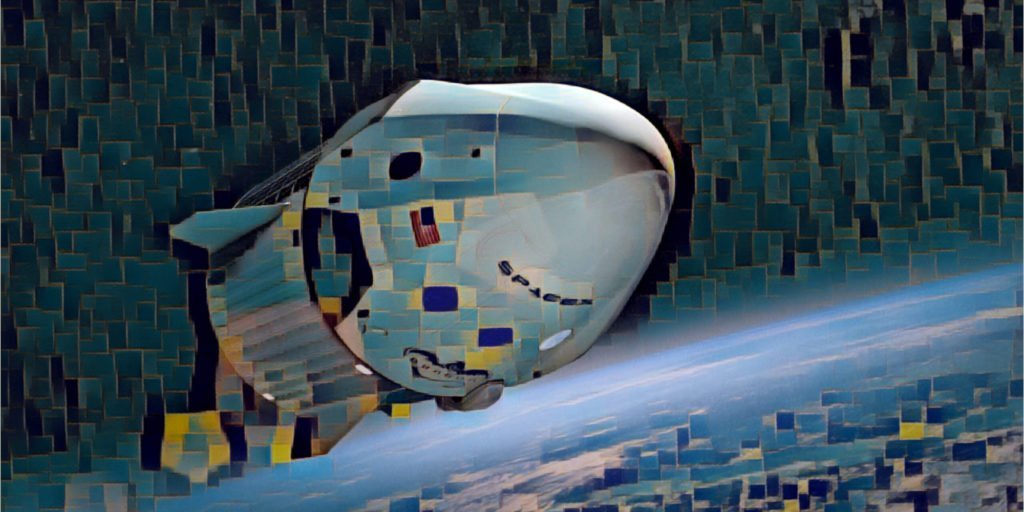
Evacuating Earth was arguably the most difficult thing ever undertaken by humankind. I say arguably because we only had recorded history to go off of which picks up sometime after we knew about fire and the wheel, then tapers off just after moon landings and cellular phones. All of that stuff in between – pyramids, circumnavigation of the globe, manned flight – were steps we could’ve climbed, generation after generation, to reach the heavens.
We got distracted though and built steel and glass edifices that towered into the sky, traveled the globe in search of excitement, and then plastered it on social media for everyone to see even as we retreated into individualized worlds of our own creation. By the time we realized demise had metastasized in the world writ large, it was too late to convert eons of human experience into a ‘How To Evacuate An Entire Planet For Dummies’ quick read. Our species was backed into a corner, trapped, and like any trapped animal, panic set in. It became our new norm.
New norm. Old norm. Was there any difference? Scientists toiled away in obscurity to find answers to questions that just weeks before had been the stuff of science fiction: How do we get large numbers of people in space? Where can we send them? How long will it take? The rest of us coalesced into predictable tribes.
Some thought the best solution was to find ideal genetic specimens to send into orbit – a dozen or so Adams and Eves – and keep them in suspended animation. When the time was right, they would be awakened, procreate, and then rehabilitate fallen Earth. Who would get to be Adam and Eve though?
There was talk of creating television shows where contestants would compete and viewers vote on it. Or adding it to the lottery – someone could buy their chance to be Adam or Eve redux along with their shot at Mega Millions or Powerball.
Others set their sights on the moon or Mars. Neither were habitable, but when your ship is sinking you’ll grab hold of any little piece of hope you can find. A collection of governments and global corporations promised trillions to figure out how to colonize both. They created a website with animation showing colossal domed environments where lush plants grew among cylinder-shaped dormitories. For a five-figure fee, one could register early for their choice of dorm on the Tharsis Plateau or Sea of Tranquility. Some that registered sold theirs on the dark web for several times more – the going rate for hope soon topped six figures.
They launched the first round of spacecraft in mid-July. All were unmanned and carried an assortment of materials and equipment needed to build the first lunar colony. Eagle, named for Apollo 11’s lunar lander, was going to be the first of several on the moon that would become the starting point for building more on Mars. Letters went out to those that registered early guaranteeing spots in Eagle – the number of available dorms was a fraction of what had originally been promised. People took to the streets after the realization that they would be left behind on an inhospitable Earth settled in.
A group of scientists found the solution before the first spacecraft crunched down silently on lunar soil. Blood. It was that simple. People around the world queued, sometimes for days, so that a technician could drain two milliliters of blood from their veins into a stainless steel vial that was then vacuum sealed and placed in a container with identical vials. Almost 30 million tons of human blood were eventually crated up and shipped to a vast plain in Kazakhstan where dozens of intercontinental ballistic missiles reimagined as angels of life stood like sentinels, immune to death throes convulsing through the planet and ready to do their duty for humankind.
It all seemed so simple, almost foolproof. Each vial of blood was cryogenically frozen, then wired into systems on board spacecraft for a journey across space that would last for generations. Spacecraft would move from planet to planet, moon to moon, solar system to solar system if need be, until a life-sustaining world was discovered. Once that happened, the craft would burn through virgin sky and settle down on untouched soil close to sources of fresh water.
Autonomous rovers would deploy from the spacecraft to find proteins and amino acids in foliage and animal life already living on our new home. Blood would thaw so DNA within could sequence those proteins and amino acids into sentient life. We would be reborn not as exact facsimiles of ourselves, but as replicas, the intellectual hopefully unchanged though, physical attributes defined by things the rovers brought back.
My blood rode spacecraft 9 on a column of solid flame through Earth’s poisoned skies, and then ionic drive through the Kuiper Belt. It had been collected at a drug store in a city whose name I would never remember – both city and store were now consigned to unrecorded history as we traversed the heavens searching for home.
This story was originally published in Daily Science Fiction in October, 2020.
Andrew writes science-fiction and fantasy from the state of Maryland, often drawing ideas from jogs through forest trails at sunrise. His work has previously appeared in AntipodeanSF, 365 Tomorrows, Daily Science Fiction, Penumbric Speculative Fiction, and in MetaStellar as reprints and MetaStellar Anthhology – his work has also short-listed in several writing contests. Andrew welcomes reader feedback at dominobeanbag@gmail.com.

